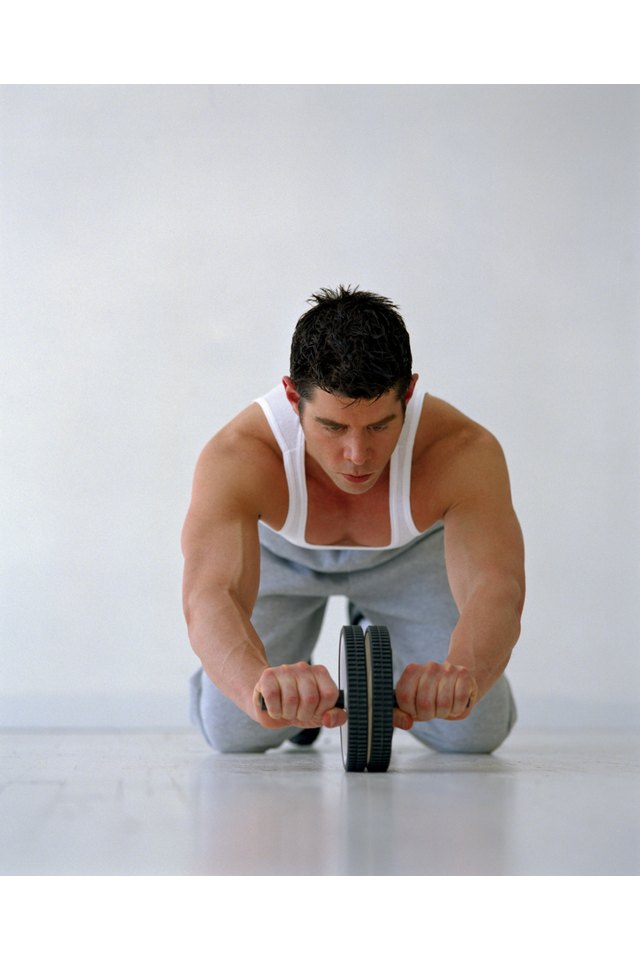The Muscles Targeted by the Exercise Wheel

The exercise wheel is the equipment used for one of the simplest ab exercises there is, but that doesn't make the exercise is easy to perform. According to the American Council on Exercise, a stable, controlled ab exercise performed with the exercise wheel is a more effective form of abdominal training than traditional crunches, since it targets all the major muscles of the core, rather than focusing exclusively on the abs. By eliciting a concentrated effort from your core muscles, training with an exercise wheel provides a way to increase strength and definition, while promoting stability and balance.
Muscles Used
The exercise wheel is marketed as a core workout tool. Since you need to balance your body in a plank-like position while rolling out on the exercise wheel, virtually every muscle in your body will contract to stabilize yourself on the wheel. The major muscles worked with the exercise wheel are the abdominal muscles, including the rectus abdominis (the so-called six-pack muscle pair that runs along the front), the underlying transversus abdominis and the obliques (which lie along your sides). The lats, triceps, hip flexors, pectorals, trapezius muscles and glutes also will be worked with the exercise wheel, but the focus will be on the major muscles of the core.
Balancing Your Core
What separates the exercise-wheel movements from traditional core exercises such as crunches and sit-ups is the balance involved. Executing movements on the exercise wheel requires the muscles of your core and back to be engaged in concert to maintain an erect, rigid position while moving on an unstable device. Minute corrections need to occur regarding weight distribution and the application of force among your major and minor muscles while performing these dynamic exercises.
Exercise-Wheel Exercises
The exercise wheel is a simple device for ab workouts, but it has a host of applications. The traditional ab rollout requires you to kneel, place your hands on the handles of the wheel and roll yourself forward until you're in a plank position. You then roll yourself back to the starting position without arching or dipping your spine. You can target your oblique muscles by rolling the wheel out at a slight angle away from your knees, and you can increase the intensity of the exercise by starting from a standing position, bending to grasp the wheel and attempting to roll out from there. Begin with a low number of repetitions because the exercise wheel puts a lot of pressure on the lower spine. You can increase your reps over time.
Considerations
Proper form is critical when working with the exercise wheel. Exercise-wheel exercises are rated highly by BodyBuilding.com, but there are risks involved. The most common problem is lower back pain that results from the strain the stability exercises place on the lower spine. If you experience pain while using the exercise wheel, you should stop and try to strengthen the muscles of your core through other means before returning to the more difficult wheel exercises. Check with a doctor before beginning an exercise routine that includes the exercise wheel, especially if you have a back condition.
References
Writer Bio
Steven Kelliher is an experienced sports writer, technical writer, proofreader and editor based out of the Greater Boston Area. His main area of expertise is in combat sports, as he is a lifelong competitor and active voice in the industry. His interviews with some of the sport's biggest names have appeared on large industry sites such as ESPN.com, as well as his own personal blog.
